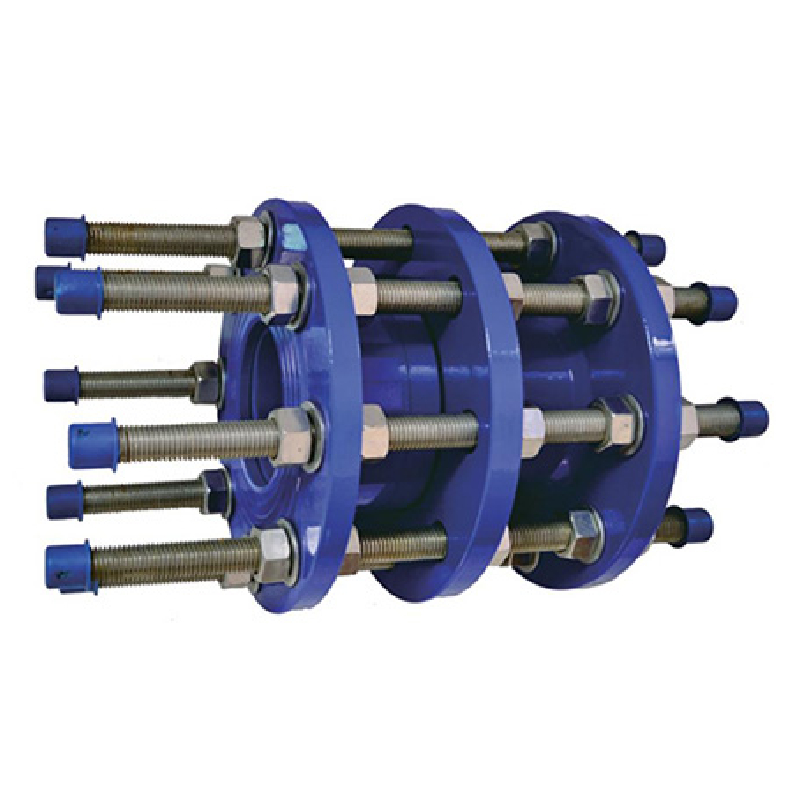ഡിസം . 31, 2024 11:53 Back to list
single sphere type rubber joint
Understanding Single Sphere Type Rubber Joints A Comprehensive Overview
In mechanical engineering and various industrial applications, flexibility in piping systems is crucial. Single sphere type rubber joints have emerged as an effective solution for accommodating misalignments, vibrations, and system movements in piping systems. This article delves into the characteristics, advantages, and applications of single sphere rubber joints, highlighting their importance in modern engineering.
What are Single Sphere Type Rubber Joints?
Single sphere type rubber joints, also known as flexible joints or expansion joints, are elastomeric components designed to absorb vibrations and movements. They consist of a rubber sphere connected at both ends to flanged or threaded fittings. The unique spherical design allows for multi-directional flexibility, making these joints ideal for systems where traditional rigid connections may fail due to stress or misalignment.
Key Features
One of the prominent features of single sphere rubber joints is their material composition. They are predominantly made of high-quality synthetic rubber, which can withstand various environmental conditions, including extreme temperatures, corrosive substances, and pressures. This durability makes them suitable for a wide range of applications in industries such as HVAC, plumbing, food processing, and chemical manufacturing.
Additionally, the design of single sphere joints allows for significant movement capacity. They can accommodate axial, lateral, and angular movements, typically in all three planes. This flexibility minimizes the potential for damage to piping systems, particularly in instances where thermal expansion or contraction occurs.
Advantages of Single Sphere Type Rubber Joints
1. Vibration Absorption These joints effectively dampen vibrations caused by machinery or fluid movement, which reduces noise and enhances the longevity of piping systems.
2. Misalignment Compensation The unique design enables the joints to compensate for any misalignment between connected pipes, preventing stress concentration that can lead to leaks or ruptures.
single sphere type rubber joint

4. Ease of Installation Single sphere rubber joints are usually lightweight and straightforward to install, which can significantly reduce labor costs and installation time compared to rigid piping systems.
5. Cost-Effectiveness While the initial investment may be higher than some traditional joints, the long-term benefits, including reduced maintenance costs and increased system reliability, make single sphere rubber joints a cost-effective option.
Applications
The versatility of single sphere type rubber joints allows them to be employed in a myriad of applications
- Water and Wastewater Treatment These joints are used in piping systems to manage water flow, minimizing the risk of pipeline fatigue and maintaining system integrity.
- HVAC Systems In heating, ventilation, and air conditioning applications, single sphere joints can absorb vibrations from fans and pumps, contributing to quieter operation.
- Chemical Processing The ability to withstand corrosive chemicals makes these joints ideal for use in chemical plants, where they can handle the movement and expansion of various fluids.
- Food and Beverage Industry Food-grade rubber joints ensure that the integrity of the product is maintained while providing necessary flexibility and movement within the piping.
Conclusion
Single sphere type rubber joints play a vital role in modern piping systems by providing flexibility, durability, and reliability. Their ability to absorb vibrations, accommodate misalignments, and resist corrosive environments makes them indispensable in various industries. As engineering continues to evolve, the importance of effective cushioning and motion compensation in piping systems is likely to increase, further emphasizing the significance of single sphere rubber joints in ensuring the efficiency and longevity of industrial operations. Understanding and utilizing these components can lead to improved design and maintenance practices, ultimately enhancing system performance.
Share
-
Reliable Wafer Type Butterfly Valves for Every IndustryNewsJul.25,2025
-
Reliable Flow Control Begins with the Right Ball Check ValveNewsJul.25,2025
-
Precision Flow Control Starts with Quality ValvesNewsJul.25,2025
-
Industrial Flow Control ReliabilityNewsJul.25,2025
-
Engineered for Efficiency Gate Valves That Power Industrial PerformanceNewsJul.25,2025
-
Empowering Infrastructure Through Quality ManufacturingNewsJul.25,2025